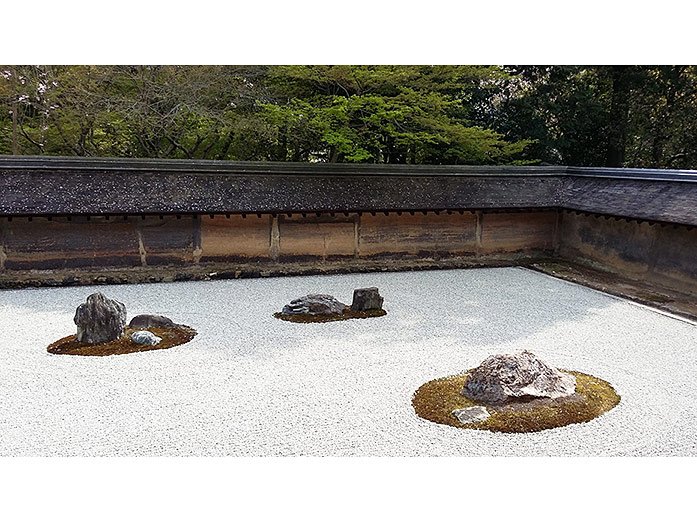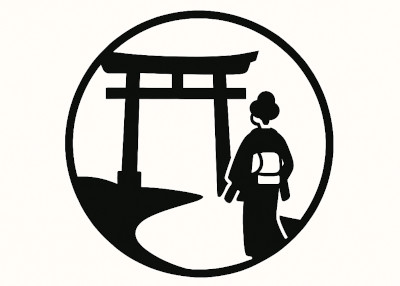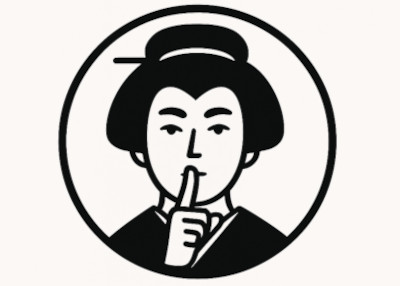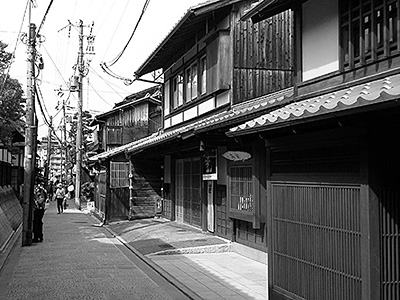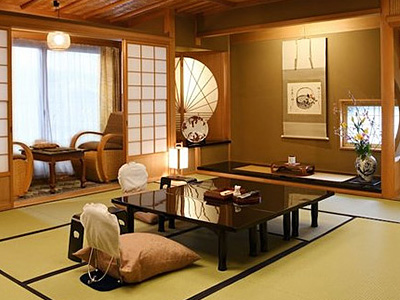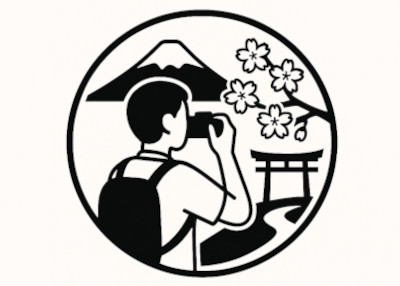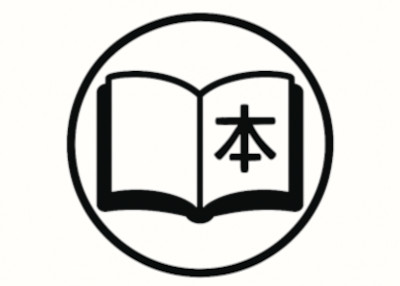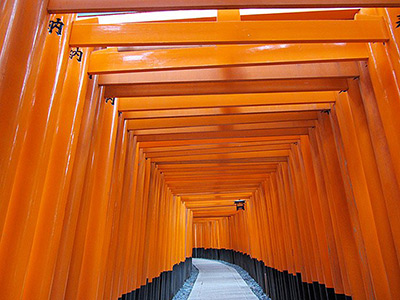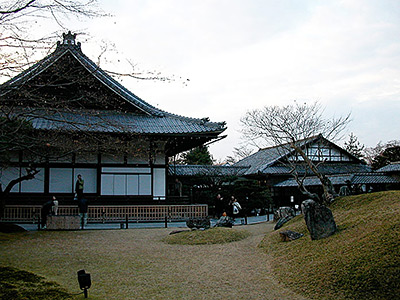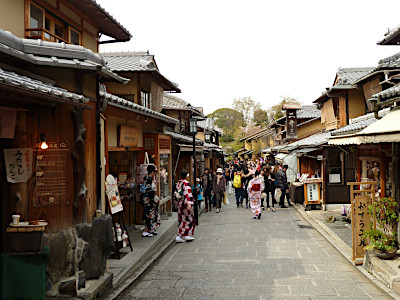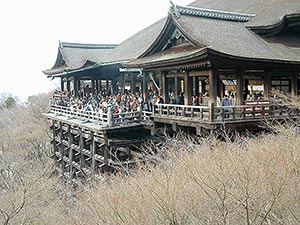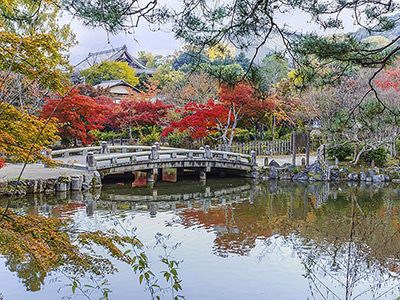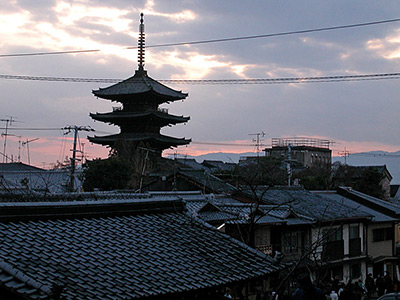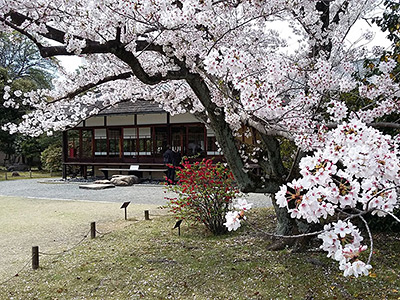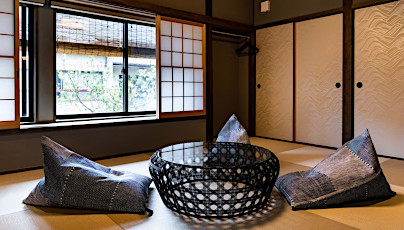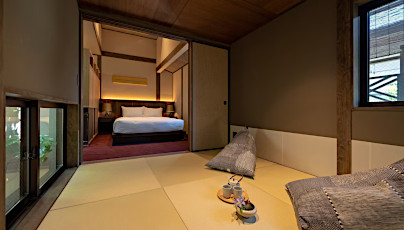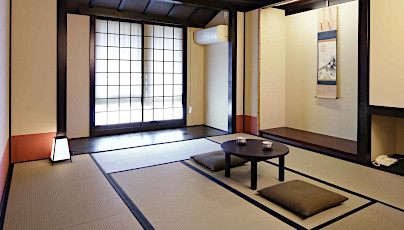Ryoan-ji Temple in Kyoto
This post can contain affiliate links, which means that we may receive a small commission if you make a purchase using these links.
Facts & Figures
Ryoan-ji (Temple of the Peaceful Dragon) in Kyoto is a UNESCO World Heritage Site and belongs to the most famous Zen Temples in Japan. The reason for this iconic status is its rock garden with 15 stones called Sekitei surrounded by white gravel. Thousands of visitors from all around the world come here every month to appreciate the unique beauty of this dry landscape garden (kare-sansui). The garden size itself is only 25m x 10m. The real meaning of the garden is not completely clear, but this gives room for everyone's thoughts and theories. Btw it is not possible to see all 15 rocks at once from any point on the terrace. Ryoan-ji is part of the Myoshin-ji school of the Rinzai sect of Zen Buddhism. My tip: To enjoy one of the biggest attractions in Kyoto to the fullest you should come here during the cherry blossom season at the end of March.
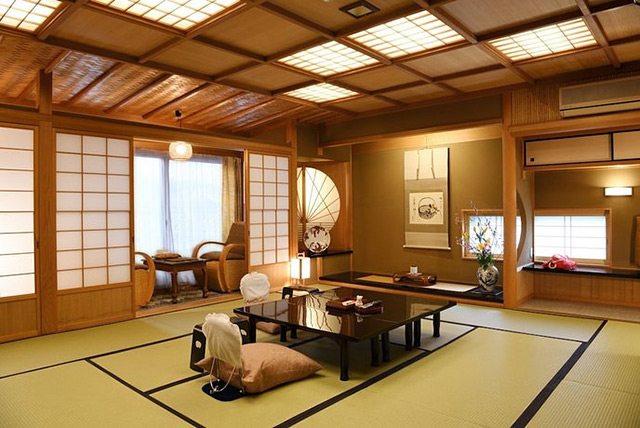 Experience the Ultimate Japanese Hospitality at a Kyoto Ryokan.
Experience the Ultimate Japanese Hospitality at a Kyoto Ryokan. Find Your Perfect Ryokan Now >
- Ryoan-ji:
- Opening Hours - 8:00 am to 5:00 pm – March to November
- Opening Hours - 8:30 am to 4:30 pm – December to February
- Admission Fee - 500 yen (Adults), 300 yen (Students)
History
The Ryoan-ji Temple was originally a villa of the powerful Fujiwara clan during the Heian Period (794 - 1185). In 1450 Hosokawa Katsumoto (1430 - 1473), a feudal warlord within the Ashikaga Shogunate, changed the villa into a Zen temple. During the Onin War (1467 - 1477) the temple was burned down, but in 1488 completely reconstructed by Hosokawa Masamoto (1466 – 1507). The exact date of the creation of the famous rock garden is still not clear to this day. Some researchers say it was in 1488 during the Muromachi period (1336 - 1573) by garden designer and monk Soami (1472 - 1525). The temple burned down in 1797 and was rebuilt shortly after. Since then nothing has changed anymore in the temple layout and architecture. In 1994 the Ryoan-ji Zen Temple was declared a UNESCO World Heritage Site and is part of the Historic Monuments of Ancient Kyoto.
Location

The UNESCO World Heritage Site Ryoan-ji is located in the northwest part of Kyoto near Ninnaji.
Address: 13 Ryoanji Goryonoshitacho, Ukyo Ward, Kyoto, Kyoto Prefecture 616-8001
How to get to Ryoan-ji?
- 30min from Kyoto Station to Ritsumeikan Daigaku-mae stop by Kyoto City Bus 50
- 7min walk from Ritsumeikan Daigaku-mae stop to Ryoan-ji
Sightseeing spots at Ryoan-ji Temple grounds
Top:
Ryoan-ji Zen rock garden - This dry landscape garden with its 15 rocks is the most famous in Japan.
Kyoyochi Pond (Mirror Pond) - It is one of the best cherry blossom spots in Kyoto. The history of the pond is dating back to the 12th century.
Hojo - The former residence of the head priest (abbot) is known for the beautiful paintings (fusuma) at the sliding doors and the great meditation hall.
Teahouse and Tea Garden - Built during the 17th century and a great example of the Japanese architecture style during the Edo period (1603 - 1868).
Chisoku No Tsukubai - This famous stone water basin was used for the purification ceremony. It has the appearance of an old Chinese coin.
Yudofu (boiled tofu) - Try out this local cuisine in a restaurant located within the spacious strolling garden of the temple complex.
Seven Imperial Tombs - Seven imperial family members are buried here, which are Emperor Enyu (959 - 991), Ichijo (980 – 1011), Go-Suzaku (1009 - 1045), Go-Reizei (1025 - 1068), Go-Sanjo (1032 - 1073), Horikawa (1079 - 1107) and Imperial Princess Teishi (1013 - 1094).
Bonsho - Look out for this traditional Buddhist temple bell, which is used quite often during festivals and big events like the New Year celebrations.
Festival & Events (dates can change without notice)
April
Hanamatsuri (8th)
The "flower festival" is a celebration of Buddha's birthday.
May
Aoi Matsuri (15th)
The highlight of this festival is a large parade from the Imperial Palace through the Shimogamo Shrine to the Kamigamo Shrine. More than 500 people wearing aristocratic costumes from the Heian Period (794 - 1185). The Aoi Matsuri belongs with the Gion Matsuri and Jidai Matsuri to the three most famous festivals in Kyoto.
Arashiyama Mifune Matsuri (third Sunday of May)
The first part is held at the Kuramazaki Shrine. Later a procession is leading to the Oi River, where more ceremonies and traditional dances (Funa Asobi) are held. The Arashiyama Mifune Matsuri started in 1914.
July
Gion Matsuri (whole month)
The month of July is full of different events like the Yoiyama - Kyoto's Magical Night (locals in kimonos look at the giant Gion floats the day before the parade) or the famous Yamaboko Junko (float procession on the 17th of July).
October
Jidai Matsuri ("Festival of Ages") (22nd)
People celebrate with a large parade between Imperial Palace to Heian Shrine the anniversary of the foundation of Kyoto. App. 2000 participants wearing historical costumes from different time periods. Enjoy this great festival which lasts around 2 hours.
Where to stay in Kyoto?
Book your Flight Tickets and Rental Car for your Japan trip
Day trips from Kyoto:
Travelers who viewed Ryoan-ji viewed also:
Top rated - Best Machiya Houses in Kyoto
THE MACHIYA Ebisuya, 192 Ebisuya-cho Shimogyo-ku, Kyoto 600-8062
This 3-star guesthouse got an excellent rating. All 30 individually furnished rooms offer free WiFi, air conditioning, bathrooms incl. toilets, fridges, 40-inch flat-screen TVs, and more. THE MACHIYA Ebisuya is located in central Kyoto.
View on Expedia.com
This 3-star guesthouse got an excellent rating. All 30 individually furnished rooms offer free WiFi, air conditioning, bathrooms incl. toilets, fridges, 40-inch flat-screen TVs, and more. THE MACHIYA Ebisuya is located in central Kyoto.
View on Expedia.com
The Machiya Kazahaya, 570-6 Kazahayacho, Shimogyo-ku, Kyoto, Kyoto, 600-8475
The Machiya Kazahaya offers for all guest rooms free WiFi, air conditioning, safes, bathrooms with toilets, refrigerators, and much more. Enjoy also the beautiful Japanese Garden. Guests gave this property the rating - Exceptional.
View on Expedia.com
The Machiya Kazahaya offers for all guest rooms free WiFi, air conditioning, safes, bathrooms with toilets, refrigerators, and much more. Enjoy also the beautiful Japanese Garden. Guests gave this property the rating - Exceptional.
View on Expedia.com
Kyomachiya Ryokan Sakura Urushitei, 425 Kichimonjicho, Shimogyo-ku, Kyoto, 600-8069
This beautiful 3-star guesthouse offers 32 rooms with free WiFi, air conditioning, bathrooms incl. showers and toilets, refrigerators, and much more. Enjoy also the relaxing indoor public bath (no minerals). Guests gave this property the rating - Wonderful.
View on Expedia.com
This beautiful 3-star guesthouse offers 32 rooms with free WiFi, air conditioning, bathrooms incl. showers and toilets, refrigerators, and much more. Enjoy also the relaxing indoor public bath (no minerals). Guests gave this property the rating - Wonderful.
View on Expedia.com

